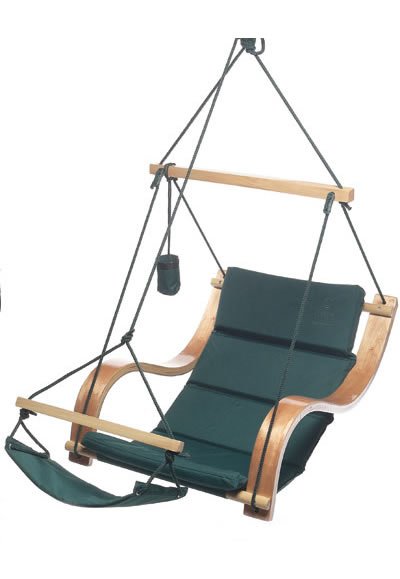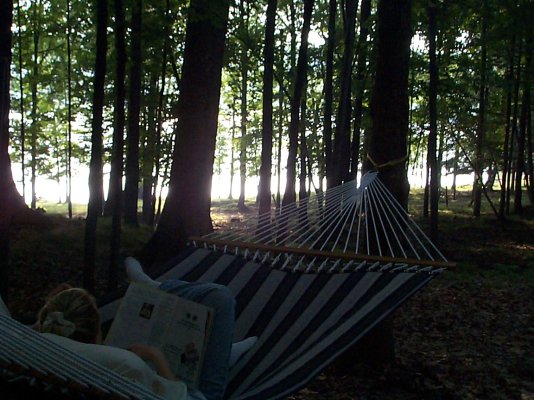ScooterGuy
Recycles dryer sheets
- Joined
- Feb 12, 2007
- Messages
- 150
In my travels, I've taken to carrying a lightweight hammock, which weighs about 1 lb. & packs into a space about the size of a half-loaf of bread. This isn't the dreaded lawn hammock with a 'spreader bar,' the butt of jokes and overturnings. Mine is just a very comfortable fabric-supported pocket (I'm 6' 8" tall and weigh 275 lbds. -- my hammock supports up to 400 lbs.), supported between two trees, posts or similar strong upright things. See www.treklightgear.com
It is entirely possible to sleep flat, or on your side, just by getting on the diagonal. Folks with 'bad backs' have found hammocks to be more comfortable than beds. When resting, I also use my hammock as a suspended 'lounge chair,' sitting sideways. Hammock ties can be ropes or my favorite, motorcycle tie-down straps (breaking strength 1000 lbs.). I carry mine in my maxi-scooter, a Suzuki Burgman AN650. It could just as easily go in a bicycle, backpack or in a car.
I use it locally, to rest comfortably. I also used it several times during my recent trip to Hell and back (Hell is in Michigan), over a 6 day, 1400 trip. I have a 2nd hammock, permanently strung up in a spare bedroom, upstairs, which I use after a strenuous rowing session on my ergometer.
While I don't camp anymore, a hammock-camp system eliminates a tent and ground system, and is a lot more comfortable than sleeping on ther ground for my old bones. See HENNESSY HAMMOCKS.com: ultra-light line of jungle hammocks, ultra-comfortable camping hammock /chair/ tent combo
Anyone else here had favorable (or un-favorable) experiences with hammocks, before or after ER?
It is entirely possible to sleep flat, or on your side, just by getting on the diagonal. Folks with 'bad backs' have found hammocks to be more comfortable than beds. When resting, I also use my hammock as a suspended 'lounge chair,' sitting sideways. Hammock ties can be ropes or my favorite, motorcycle tie-down straps (breaking strength 1000 lbs.). I carry mine in my maxi-scooter, a Suzuki Burgman AN650. It could just as easily go in a bicycle, backpack or in a car.
I use it locally, to rest comfortably. I also used it several times during my recent trip to Hell and back (Hell is in Michigan), over a 6 day, 1400 trip. I have a 2nd hammock, permanently strung up in a spare bedroom, upstairs, which I use after a strenuous rowing session on my ergometer.
While I don't camp anymore, a hammock-camp system eliminates a tent and ground system, and is a lot more comfortable than sleeping on ther ground for my old bones. See HENNESSY HAMMOCKS.com: ultra-light line of jungle hammocks, ultra-comfortable camping hammock /chair/ tent combo
Anyone else here had favorable (or un-favorable) experiences with hammocks, before or after ER?




